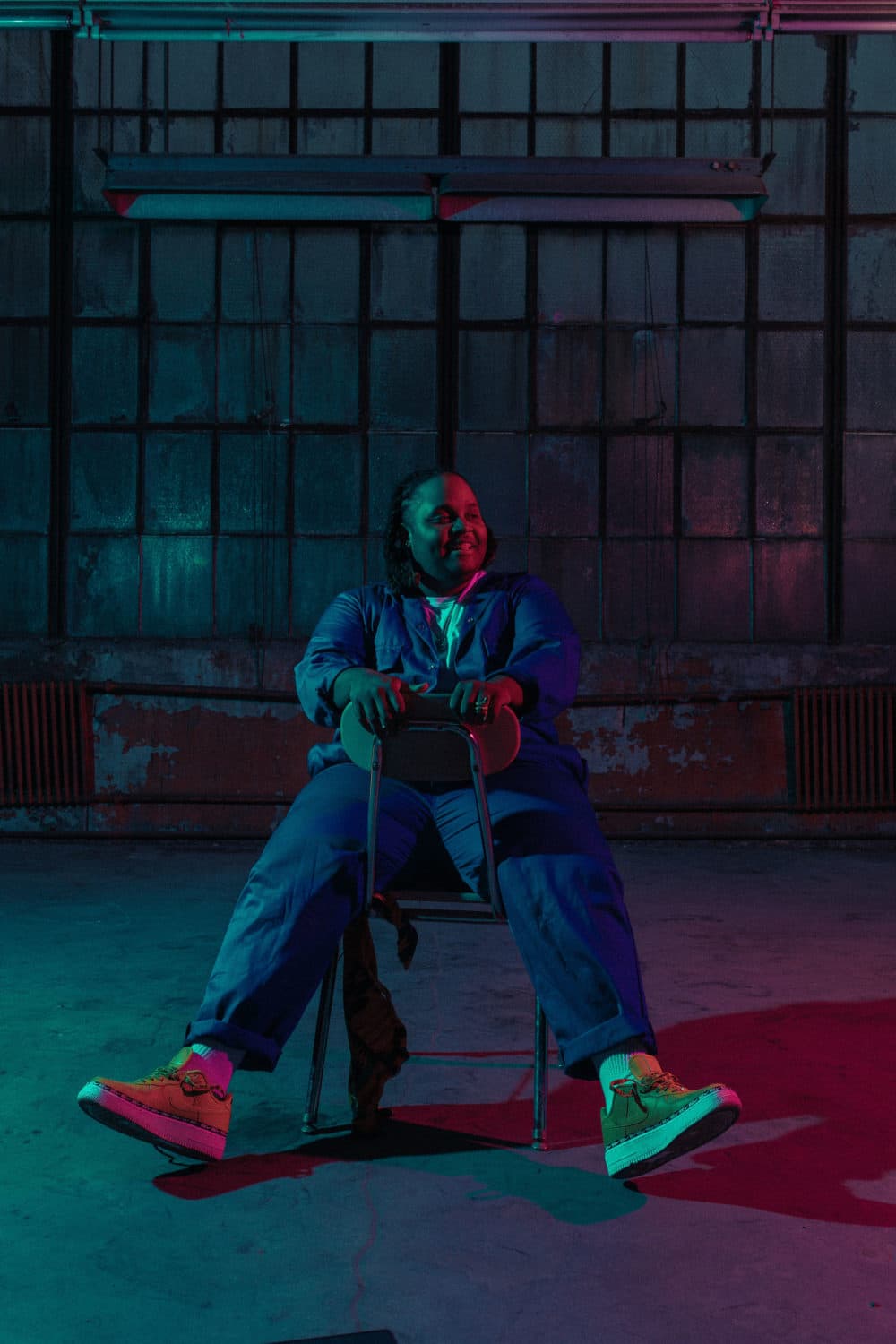Advertisement
The MFA's Closed, But Its Big Basquiat Show Will Still Open, Just From A Distance
What does a major art museum do when a groundbreaking, painstakingly curated and expensive exhibition about a rock star artist can't debut because of the coronavirus?
Well, like so many other arts organizations trying to connect in our newly distanced world order, the temporarily-shuttered MFA is going digital. The museum is moving elements of “Writing the Future: Basquiat and the Hip-Hop Generation” online, including it's kick-off party.
For the bash, curators, contributing artists and DJs are salvaging what would've been a six-hour opening by condensing it into a one-hour social media event celebrating Jean-Michel Basquiat. The party goes live on Instagram Friday, April 3, at 9:30 p.m.

It will be hosted by Boston-based rapper, poet and educator Oompa, one of more than two dozen local artists who've been involved in planning the exhibition's public programming. Her disappointment over the cancelations turned to sadness she said, “because Basquiat is my favorite contemporary artist."
The physical exhibition was designed to immerse visitors in Basquiat's New York City, circa 1980s, when graffiti and street art born in subways evolved from being symbols of urban blight to works worthy of display in galleries and museums. Basquiat and his posse of artist and musician friends embodied and drove that transformation.
The artist, born in 1960, was precociously talented. His father was Haitian and his mother was of Puerto Rican decent. Basquiat started out making epigrams on the street in Manhattan's Lower East Side. He transferred his aesthetics to canvas, using poetry, text and imagery in his paintings to explore the black American experience. His neo-expressionist paintings made their way to the walls of international museums, including the Whitney in New York. Basquiat died of an overdose when he was just 27-years-old.
For Oompa, it was like a dream come true to be invited to contribute to the MFA's exhibition and she plans to channel that passion in her new Insta role. “As a host under these conditions it feels extremely important to just bring that,” she explained, “because we are at a place in humanity where all the playing fields are leveled. Nothing matters about status, past, future, plans, money. It just matters how we show up as and for humans and I'm excited to play my part.”
Advertisement
According to the museum, past Late Nites have attracted about 4,000 attendees. During the streaming event Oompa will lead the social media audience through a lineup of live virtual performances by other local rappers and musicians including Cake Swagg, Dalaun and DJ Alcide.
MFA curator of contemporary art Liz Munsell will also be on deck Friday with co-curator Greg Tate to talk about the story they wanted to tell through the exhibition.
Tate, a Harlem-based musician and former Village Voice staff writer, has been called “one of the godfathers of hip-hop journalism.” His critical lens explores how 19802 black culture lives in Basquiat's work which confronts class struggles, racism and income inequality.
For the physical exhibition the two curators created a narrative using painting, sculpture, video, music, writing, drawing and fashion to explore hip-hop culture by breaking it into four elements: graffiti art, DJing, rapping and breakdancing. The MFA borrowed 35 Basquiat works from museums and collectors for the show, along with about 90 works by 11 of his contemporaries including Keith Haring, Lady Pink, ERO and Fab Five Freddy.
Munsell has been working on organizing "Writing the Future" for 2 1/2 years. She said despite the current upheaval – one that also caused the MFA to announce to its members this week that it could remain closed through July 1 and all public programming is canceled through August – the team is committed to telling the story of post-graffiti artists who overcame great barriers to create change in the world.
“In the 1980s, these very young creators were making art in public space that city authorities criminalized and sought to wipe out, yet they persisted,” Munsell wrote in an email, “and later infiltrated the very white art world, insisting it make room for their voices. They brought hip-hop culture, including graffiti art, to international fame, paving the path for hip-hop’s present day world domination.”
The “Writing the Future” exhibition was supposed to open to the public on Sunday, April 5. Now, beginning Saturday, April 4, the museum will post artworks by Basquiat and his contemporaries on Instagram, Twitter and Facebook. With the posts, Munsell and her co-curator Tate will provide in-depth context. She said it will allow the exhibition to reach an international audience. "So this is a major opportunity to create and provide free and far-reaching access to the art and ideas that drive the exhibition,” she added.
With the loss of ticket revenue from such a highly anticipated exhibition, this type of digital outreach is also one of the few ways for the museum to engage dynamically with housebound art lovers who could be inspired to make donations.
Munsell and her peers at the MFA know they can't replace the loss of a physical exhibition with a digital one, but it will be something to tie audiences over while the museum is dark for so many months.
The kick-off digital party for “Writing the Future: Basquiat and the Hip-Hop Generation” goes live on Instagram Friday, April 3, at 9:30 p.m.
